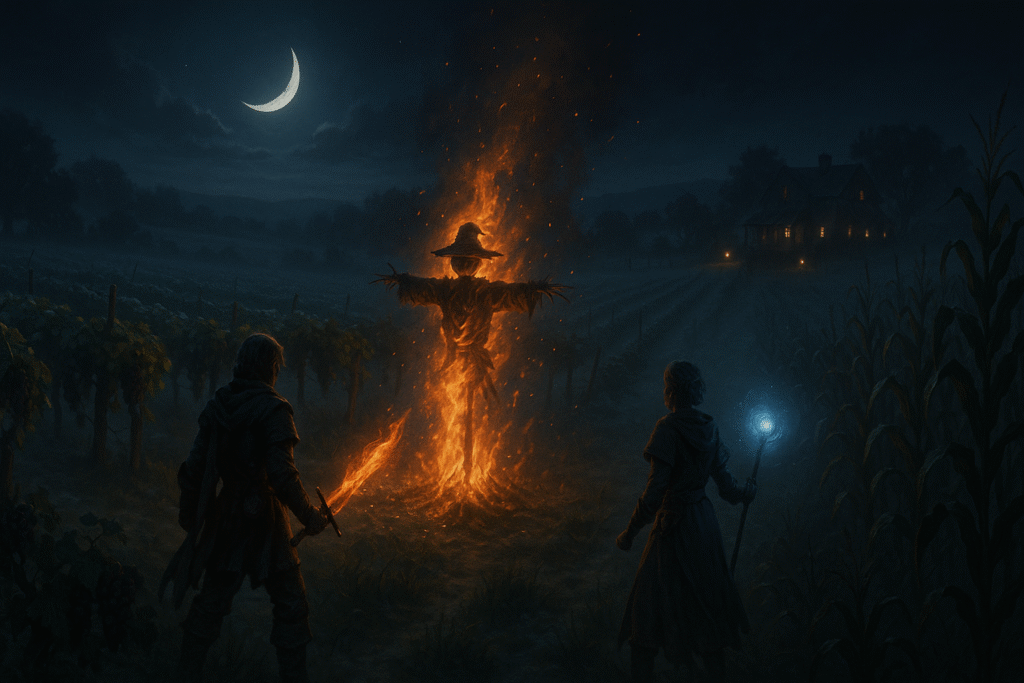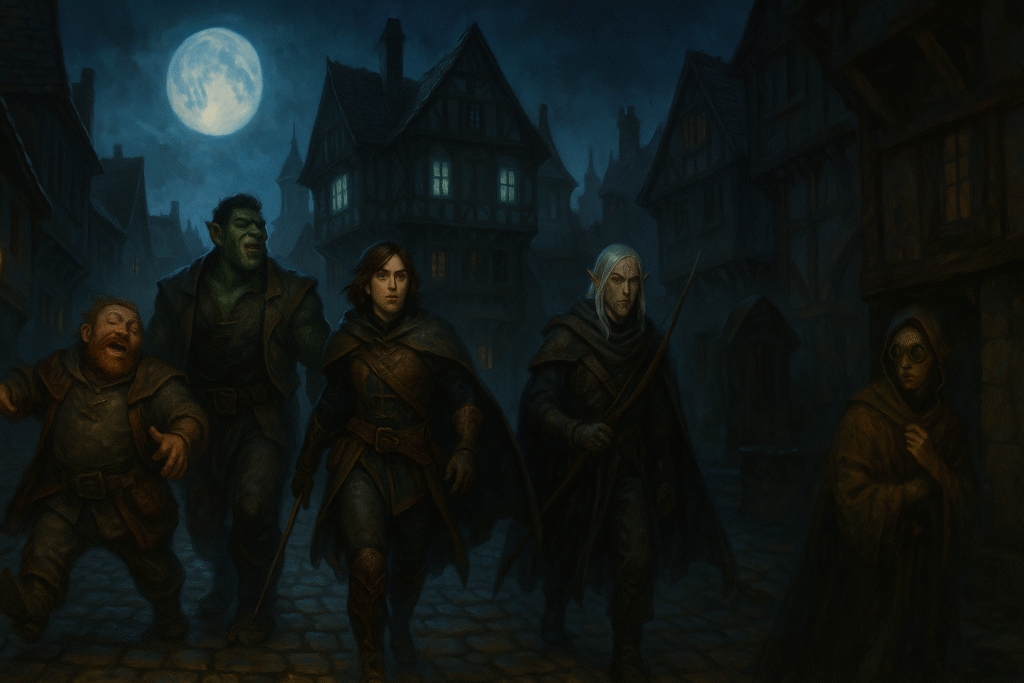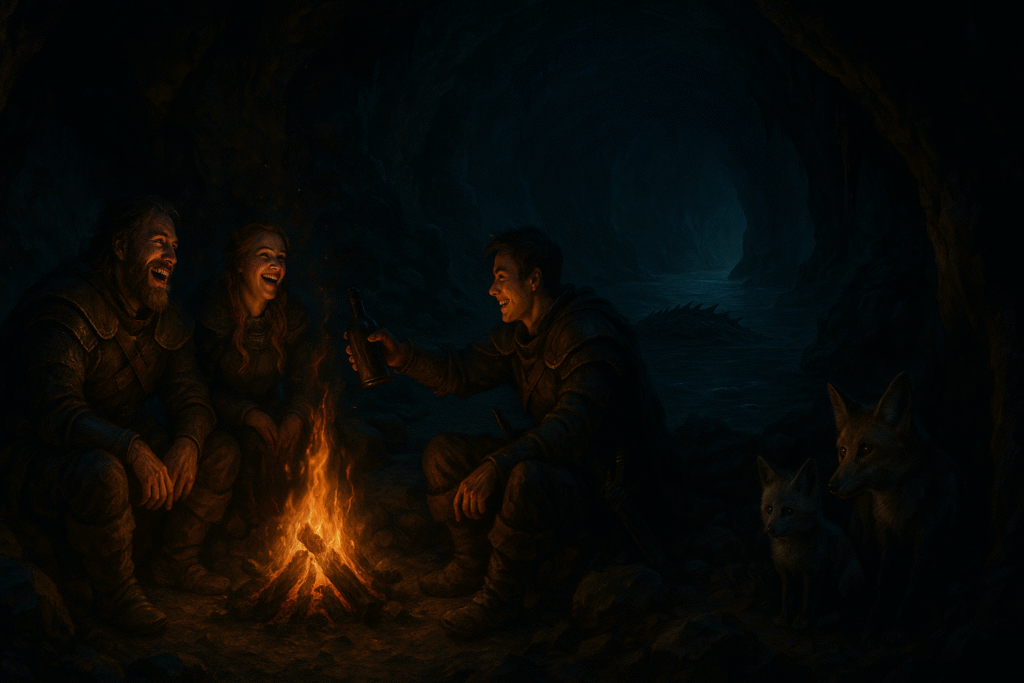Session 0: Preparing for Campaign 2

Preparing Campaign 2: Exits, Entrances, and Everything In Between
When we wrapped up Campaign 1 of Voxels & Valor, I faced a crossroads as a DM. The players had reached level 6, and the next question was: do we keep riding this momentum, or reset to level 1 with a brand-new adventure?
I laid out the options. We could roll into Dungeon of the Mad Mage — a continuation that lined up perfectly with their current level. Or we could reboot with Tyranny of Dragons or Tomb of Annihilation, which meant starting fresh at level 1.
The decision was nearly unanimous: nobody wanted to go back to being weak and squishy. They wanted to feel powerful. Fair enough. But that choice came with a catch: most of the players didn’t want to keep their current characters.
That left me with a tall order. Four characters had to exit in a way that honored the time players had put into them, and four new characters had to be introduced in a way that felt natural, not contrived.
Some DMs might wave a hand and say: “Four leave, four arrive, don’t overthink it.” And if that works for your table, that’s fine. But for me? That felt like a disservice. These characters had lived and breathed for nearly a year of play. They deserved better than “they walk offstage, four strangers walk on.”
This is how I tackled it — part DM journal, part guide for anyone else who finds themselves in the same boat.
Why Travel Matters
The trip from Phandalin to Waterdeep takes about two weeks on foot. Some groups might skip straight to “poof, you’re at the city gates,” but I wanted to do more.
For one, travel arcs slow the pace down. They create breathing room between campaigns, giving players time to settle into new characters. For another, they offer natural beats where characters can bow out and newcomers can arrive.
DM Tip: Don’t rush travel. Side quests, tavern stops, and chance encounters are the perfect narrative glue for major party transitions.
Exit #1: Larn (Wild Magic Sorcerer)
Larn was my son’s character, a chaotic wild magic sorcerer who had been both a powerhouse and a liability in equal measure. He was fun — unpredictable magic surges, reckless decision-making, and some very memorable near-disasters.
But as Campaign 1 wrapped up, we both felt Larn’s arc had reached a good stopping point. I didn’t want him to vanish into the ether, though. Instead, I kept him in the story world. Larn struck a deal with the Rockseeker brothers to help manage Wave Echo Cave and restore the Forge of Spells.
The party’s mine share was adjusted: 10% to Larn, 15% to the party, and the rest to the Rockseekers. It was tidy, logical, and meaningful. Larn got a legacy. The party got a reason to revisit him in the future.
Reflection: Retiring a character doesn’t have to mean goodbye. Keeping them in the world as an NPC preserves continuity and rewards the player with a sense of impact.
Exit #2: Akkira (Cleric)
Akkira’s player was more straightforward: she wanted to step away, plain and simple. Her choice was to leave a note for the party, thanking them and explaining she needed to walk her own solitary path.
At first, I worried this would feel flat. But in hindsight, it worked because it was true to the player’s wishes. Not every exit needs fireworks.
The real fun came with the replacements. Akkira’s player and Larn’s player are cousins, and they designed Nora and Noah, a pair of Genasi twins. Nora, a fiery rogue who starts trouble, and Noah, a calm ranger who finishes it. They asked for a tavern brawl as their entrance. It was perfect: chaotic, memorable, and very them.
DM Tip: Don’t underestimate simple exits. If it matches the player’s intent, it works. Save the drama for the entrances, where the energy naturally spikes.
Exit #3: Zend (Bugbear Swarmkeeper)
Zend was a riot. His running gag was destroying every door he came across. A quirk like that can seem like a throwaway joke, but as a DM, I saw an opportunity.
When I found For Whom the Void Calls in Dragon Delves, with its portal mechanics, I knew this was Zend’s ending. What’s a portal if not the ultimate door?
I re-skinned it for Faerûn, pitched it to the player, and we ran with it. Zend will vanish into a portal, leaving behind a single whispered line: “So many doors…”
His replacement, Lief Rikon, would arrive shortly after — a confused, displaced traveler on the road to Waterdeep. His disorientation is baked into his backstory, making the transition smooth.
Reflection: Lean into quirks. A small joke, a repeated habit, or a running bit can transform into the perfect narrative send-off.
Exit #4: Yami (Wizard with the Faceless background)
Yami was special. The player had inherited her as a premade in Session 2 and stuck with her for almost a year. But they deserved more agency this time.
The unused Faceless background feature turned out to be the key. Together, the player and I worked out a way to use it as a pivot — an exit for Yami, and an entrance for a new character of their design.
I won’t spoil the details here, but it was all about player agency: giving them the reins to decide when and how the reveal plays out.
DM Tip: Backgrounds are goldmines. If you need a transition, look there first. They’re often full of untapped story hooks.
Adding a New Player: Mathias
On top of all this, I had a brand-new player joining — the brother of one of my regulars. He’d never played before. We were starting at level 6, which is a big jump for a rookie.
We created Mathias, an Aasimar Light Cleric. His introduction was designed to be simple but powerful: during a tavern brawl, he stands, radiates divine light, and with a booming “ENOUGH,” ends the chaos.
It gave him presence, it gave the party a reason to notice him, and it didn’t overwhelm him mechanically.
Reflection: When onboarding new players at higher levels, give them a cinematic moment first. Let mechanics come later. Confidence grows from presence.
Looking Ahead: Waterdeep
That leaves the big question: what happens once they actually get to Waterdeep?
I’ve set the stage with a MacGuffin (a sealed silver coffer from Castle Naerytar) and a mysterious patron (Lady Severra Vellgardt). That ties them into the city right away. Maybe they’ll end up chasing the same dragon hoard as my Dragon Heist group. Maybe they’ll dive into Mad Mage. Or maybe I’ll take my son’s advice — and just make it up as I go.
And honestly? That’s half the fun.
DM Tip: Open ends aren’t weak prep. They’re flexible prep. Sometimes the best plan is no plan at all — just a handful of threads to follow when the moment comes.
Final Thoughts
Transitions are tricky. They’re not the dramatic boss fights or the emotional finales. But they matter. How characters leave and how new ones arrive can define the tone of an entire campaign.
What I learned from this prep is simple:
- Respect the old characters — give them exits worthy of the time spent playing them.
- Welcome the new characters with moments that matter.
- Don’t be afraid to stitch modules, homebrew, and quirks together to make it work.
- And most of all, leave room for surprise.
Campaign 2 is shaping up to be as unpredictable as Campaign 1. And that’s exactly how I like it.


